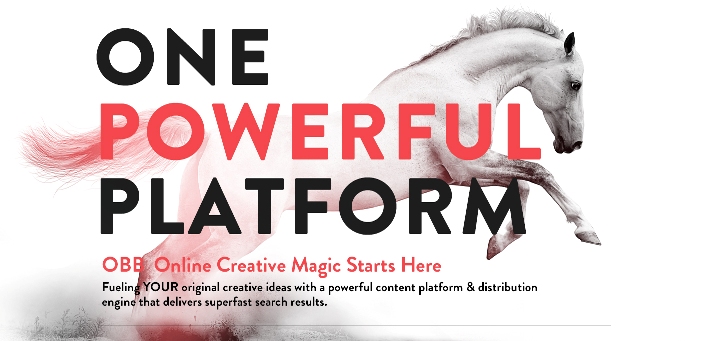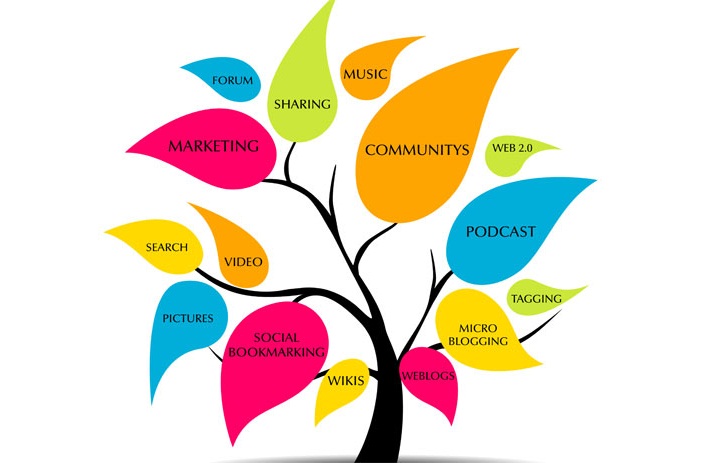Why Social Integration? The World Is Changing-Everything is connected
Tags: Everything IS Connected:Â
Everything IS Connected: The world is changing. Marketing is no longer defined by lip-service promotions. Instead consumers are flocking to the Internet, seeking information about their favorite brands and products. They want the immediacy of networking; they want the ease of web site posts; they want instant communication.Â
Â
And they’re willing to give their loyalties (as well as their dollars) to companies that offer these things through social integration.
Â
Â
It’s also connected to the way individuals shop.Â
Â
Consumers are now spending their time--and their money--online. They’re seeking out company web sites, utilizing social media as a way to learn and buy. It’s estimated that:
Â
71% of users rely on online information for all of their purchasing.
Â
79% of users seek out company social accounts (like Facebook or Twitter) to receive updates and incentives.
Â
81% of active social media users favor companies and products found in their networks.
Â
70% of active social media users do the majority of their shopping online.
Â
The statistics are startling--if only because they can no longer be ignored.Â
Â
Social integration is linked to consumer awareness. Companies that embrace networking, blogging and more become part of an ever-expanding circle of accounts. They are connected directly to the demographics they need, bringing traffic to their sites and sparking profits every quarter.
Â
A business that isn’t integrated is a business that’s losing money. One Big Broadcast helps to earn those dollars back.
 Social Integration: What One Big Broadcast OffersÂ
One Big Broadcast is a social media platform developed with propietary technology. It delivers complete social integration through techniques like:
Â
Scheduled Content
IMGY Galleries
Private Communities
Company Profiles
SEO-focused Blogging
And More
Â
The purpose of these tools is to fully embrace the power of social media. Relevant content is offered to networks and engines, dominating searches. Niche marketing, along with mobile options, attracts targeted audiences. A site is fully connected to the Internet... and that allows it to be fully connected to users.
Â
One Big Broadcast pushes brands to the forefront of social media, integrating them into the consciousness--and posting preferences--of consumers. Its cloud-powered console brings companies and clients together.Â
Â
And this is essential.
Â
Contact One Big Broadcast today to discover the media connection.
DealerNet Services
 So how smart is it for small businesses to invest in giveaways especially when their profits are already wafer thin and they’re struggling with their marketing strategies? The answer is of course yes! Giveaways are a worthwhile investment and go a long way in not only building better relationships with your existing customers but also comes in handy in making new clients.
So how smart is it for small businesses to invest in giveaways especially when their profits are already wafer thin and they’re struggling with their marketing strategies? The answer is of course yes! Giveaways are a worthwhile investment and go a long way in not only building better relationships with your existing customers but also comes in handy in making new clients.Almost all small businesses are heavily dependent on their returning customers which constitute their 80% sales. Following are some of the reasons which make free giveaways a worthwhile investment for small businesses.
Customer retention
Customer retention is of utmost importance for wholesale suppliers since their business largely depends on a few big clients. In an industry where clients are hard to come by, wholesale traders must do whatever it takes to retain their existing customers since, as mentioned earlier, they are their primary source of revenue. Giveaways go a long way in showing just how much you value your special customers. Customers too in return feel the obligation of staying committed in their dealings with you and do not look for other suppliers.
Building better relationships
There is no better way of building trust and developing stronger relationships with your customers than via free giveaways. They are the best possible way to appreciate your valued clients and show them just how much they mean to you. Giving presents as such is a good practice and should be a norm because it literally spells out just how much the customer means to the company.
Free marketing
Before you give anything away, you should make sure that all of your giveaways bear the logo of your company. Giveaways with company logos and trademarks offer long lasting, cheap marketing for both your business and your product as well.
If, as an example, you have given away a paperweight to your client, you can be sure that it would do more than just weigh papers down! A desk, office accessory that your client puts on his office table is there for everybody he meets, greets in his office. So in that sense, you are not only reaching out to your client only but also to those who are your client is reaching out to.
Because of these and many other reasons, I believe this season every small business must invest in free giveaways.
Written by Robert.
DealerNet Services
Social Media: The Most Economical Yet effective Marketing Tool
Tags: We all know that social media is huge today. People just can’t live without sharing what they feel or displaying what they wear. It’s all sociology from one perspective but it can also mean marketing to a few from another perspective. It is a common fact that where there is sugar there will be the bees. Similarly whenever there are huge concentrations of people, the marketer and advertisers are always there to make use of such situations and struggling to sell products or gain a good brand reputation.
We all know that social media is huge today. People just can’t live without sharing what they feel or displaying what they wear. It’s all sociology from one perspective but it can also mean marketing to a few from another perspective. It is a common fact that where there is sugar there will be the bees. Similarly whenever there are huge concentrations of people, the marketer and advertisers are always there to make use of such situations and struggling to sell products or gain a good brand reputation.Customer retention is by far the most effective way through which a business may gain prosperity and customer retention could only be possible when the people are repeatedly reminded of a brand or a shop or by simply infusing in them a desire to feel the need of anything which the company might be selling. With the advent of social media or to be more precise, when the social networking became the life of the people around the globe, viewership at a specific portal started increasing. Since all that a good TV channel needs is ratings to attract advertisers, here at social networking websites all was already set. People are frequently logging in and out of websites like Facebook, uploading pictures to get comments and statuses to tell their friends what they are going through.
The high concentration of people gathering around the social networking websites provides the traders with the cheapest form of marketing possible. The best part is that the add is displayed on various places and even if the user ignores the advertisement the people around the user may notice the availability of a new item at a some celebrated store and might hasten to buy it before someone else from the community buys. The desire to stand unique among the rest is experienced by everyone and it is this very desire which the traders may cash even when they are trading for wholesale products.
It is an open secret that nearly everyone uses Facebook, Twitter, LinkedIn, Instagram etc. these days. People even prefer to buy cell phones supporting applications which may lead them straight and in as less time as possible to their cyber wall where they post all their statuses or tweets or whatever they want to post. So naturally potential customers are always there looking for ways and means to get a better bargain in the market, searching for some better way to defeat that big competitor who usually gets all the customers due to his high quality yet economical products. Here is where the wholesale traders can actually seal a good deal and earn major profits if only they can post their advertisement, which is always facilitated by such websites.
Social media has by far, revolutionized marketing in every way imaginable. Advertising in now cheaper, effective and result oriented and many businesses are gaining the upper hand in the markets just by a little but careful investment on the social media. What people need to do is to concentrate on social media for advertising their products as compared to getting involved in other expensive, less effective means of advertising.
Written by Robert.
DealerNet Services
 Do you really know how important SEO is? Seriously, do you really?
Do you really know how important SEO is? Seriously, do you really?You can’t just have a website with cars on it any more. You’ve got to make sure people can see it, which means you’re responsible for link building, citation building, site optimizing, blog writing, and social media work.
That seems like too much work to most dealers, but numbers don’t lie – and these numbers show just how important SEO is for continued success.
The first stat I hit dealers with is that there are 100 billion searches per month on Google1 - that’s 33 million a day. To put it in better perspective, if each person on the planet were able to, they’d have to search on Google 5 times a day, every day. This at first seems astronomical, but even today I’ve probably used Google 10+ times for non-SEO related searches. I usually use this stat to illustrate the importance of Google’s market share to dealers.  Frankly, Google rules, and it doesn’t really matter if your small business ranks high on AOL.
The second stat: 89% of consumers use search engines for purchase decisions as well as (3.) 71% of business purchase decisions are started with a search engine. I know, I know… That’s two stats, Bryant. I threw these together for a specific reason. It is in fact a ‘double-edged sword’ – regardless of the sector or industry you’re in, both companies and consumers are using search engines to start the buying process.
At this point, I’m usually steering a dealer towards answering the “what does this mean for me?†question. The next stat I use: of the 30 billion mobile searches a year, 12 billion are local.(4.) It is widely expected that in the near future, local searches will account for over half of all mobile searches annually. This is where I start hammering in the importance of a mobile site. If you don’t have one yet, you absolutely need one.
With the fourth stat, I try to hammer home the importance of the mobile site. This is when I tell dealers that 77% of mobile search happens at work or home even though a computer may be accessible (5.) As strange as this sounds, it happens more often than you’d expect. Regardless of where I am, even if I’m at my computer,  if I’m looking for driving directions, I use my phone. At home, if I am browsing on the couch, I am using my tablet. It never occurs to me to jump on the computer in the office, or to pull up the browser on my home desktop for a simple and quick search.
The fifth stat backs up the mobile aspect even more strongly: 46% of mobile web users are unlikely to return to a website they had trouble accessing from their phone and even more are unlikely to recommend the site (6.) This is succinct enough to illustrate not only the importance of having good mobile content, but a site that’s easy to navigate and isn’t confusing.
The next stat is what I call “the closer†– 55% of purchase-related conversions occur within 1 hour of the initial mobile search  (7.) Simply and strongly put, mobile sites convert at a much higher rate than conventional websites – but if you aren’t doing SEO, no one will find your site… and no one will convert.
The next three stats further illustrate the importance of SEO to dealers: in all searches conducted, 70% of users click on organic results  (8.) that 53% of the organic search clicks go to the first link (9.) and most importantly, 75% of users never click past the first page (10.) This is usually when the bell goes off for most dealers. They finally realize that if they  want to get more clicks, they have to rank the highest in the organic results – and that won’t happen without SEO.
Stats even show that organic search leads are more qualified. SEO leads have a 14.6% close rate, while those archaic print or direct mail ads only close at a 1.7% rate (11.) Pretty crazy – leads from search engines are 8.5 times more likely to close than a standard outbound lead.
Most dealers aware of any of these points until we talk to them, which is why I’m sharing this post. In fact, Search Engine Optimization is still only an industry term that most people outside of marketing probably hasn’t heard. These numbers are proof – SEO is not only vital to maintaining a brand, it’s absolutely necessary if you want to stay competitive and grow your business.
Written by Bryant Goodall
DealerNet Services
 Stat Sources:
1 Search Engine Land – August 2012 (http://searchengineland.com/google-search-press-129925)
2 Brafton – February 2012 (http://www.brafton.com/news/89-percent-of-consumers-use-search-engines-for-purchase-decisions)
3 Brafton – December 2011 (http://www.brafton.com/news/search-marketing-alert-61-percent-of-business-purchase-decisions-start-with-search)
4 Search Engine Land – April 2012 (http://searchengineland.com/analyst-mobile-to-overtake-pc-for-local-search-by-2015-119148)
5 Search Engine Land – August 2012 (http://searchengineland.com/study-55-percent-of-mobile-search-driven-conversions-happen-in-one-hour-or-less-151432)
6 Gomez – 2011 (http://www.gomez.com/resources/whitepapers/survey-report-what-users-want-from-mobile/)
7 Search Engine Land – August 2012 (http://searchengineland.com/study-55-percent-of-mobile-search-driven-conversions-happen-in-one-hour-or-less-151432)
8 Search Engine Journal – April 2012 (http://www.searchenginejournal.com/24-eye-popping-seo-statistics/42665/)
9 Search Engine Watch – October 2012 (http://searchenginewatch.com/article/2215868/53-of-Organic-Search-Clicks-Go-to-First-Link-Study)
10 Hubspot – May 2011 (http://blog.hubspot.com/blog/tabid/6307/bid/14416/100-Awesome-Marketing-Stats-Charts-Graphs-Data.aspx)
11 Search Engine Journal – April 2012 (http://www.searchenginejournal.com/24-eye-popping-seo-statistics/42665/)
- See more at: http://blog.autorevo.com/2013/08/10-seo-stats/#more-3198
 Every once in a while I stop for a moment and consider just how radically different marketing is today from what it was just three years ago. Looking no further than my desk, I am quite amazed at how my job has changed in just that short time.
Every once in a while I stop for a moment and consider just how radically different marketing is today from what it was just three years ago. Looking no further than my desk, I am quite amazed at how my job has changed in just that short time.Previously, marketing seemed more an art than a science. It stood in contrast to IT, finance, and operations -- the enterprise functions that lived in a more structured and quantifiable reality than marketing.
Back then, the concept of strategic alignment across organizational lines usually seemed limited to the domain of those in the C-suite. They still focus on it to be sure, but now strategic alignment is also a concern of marketing.
Traditionally, the consumer packaged-goods industry was the leading on in which management engaged marketing in enterprise-wide alignment. It's not surprising considering the nature of the CPG business, and that focus on alignment became known as brand management. As Phil Kotlerattests in this short video, good brand management rests squarely on the shoulders of strategic alignment. The idea is not simply to communicate a brand promise, but to also fulfill that promise with well orchestrated execution and delivery.
What has changed? Now the world is increasingly lived online. The advent of social media has also tipped the scales of business communications decidedly in favor of the consumer. Therefore, customer-centricity is not merely a concern for soap makers and cereal purveyors -- it's essential for all businesses. As a result, brand-management approaches that depend on internal alignment are key to marketing success across industries. Alignment increasingly entails marketing and IT, given the online nature of our digital world.
More than ever, great marketing is about spot-on execution that delivers what's promised.
It follows then that it is not only important to align across departments, but also to align withinthe marketing department through marketing-operations management. It's no longer optional -- marketing-operations management is critical to planning and executing marketing that grows your business. When you can integrate marketing-operations management with marketing automation, adaptive customer-experience management, social media analytics and marketing optimization, then you have your hands on all the major levers that engage your market and grow your business in ways that are structured and quantifiably effective.
Marketing operations management enables success, because you’ll achieve greater consistency, efficiency, and effectiveness by automating and integrating marketing processes and workflows. Key components of this process include marketing-strategy development and planning, asset creation, campaign execution, and post-campaign analysis and reporting.
With the right approach to marketing-operations management, you can plan and develop marketing programs and workflows based on corporate initiatives, and then deliver confidently at a tactical level with consistent messaging, collateral, and execution methods. If you add budgetary views to that operating model, you achieve fiscal control while enabling collaborative planning, allocation, and program execution.
In a nutshell, that's how marketing-operations management supports strategic alignment. For more details, you might be interested in downloading this whitepaper, "Integrating Marketing Operations: How Marketers Can Align Their Strategy and Planning with Overarching Corporate Goals."
Written By John Balla
DealerNet Services
The Importance Of Influencing Pre-Market Consumers On Social Marketing
Tags: 63 percent of car buyers have an initial brand in mind before they begin researching their purchase. (Source: Google/think)
63 percent of car buyers have an initial brand in mind before they begin researching their purchase. (Source: Google/think)Why should you care about this stat that has to do with a category in which you likely do not compete?
Great question.
You should care because what this demonstrates – check that, proves – is that consumers’ brand preference and purchase intent is being influenced in the pre-market stage of their purchase path. That is, they are making critical decisions that will influence their purchases even before they are thinking about making a purchase.
Powerful stuff.
So, what does this have to do with social media and content marketing?
Another great question.
Well, this has a lot to do with it actually. Social media and content marketing affords us the opportunity to forge relationships with consumers at every stage of the purchase cycle – pre-market, in-market and post-market.
By finding ways to develop relationships with consumers before they are thinking about making a purchase – in the pre-market phase – we can influence brand preference, land our businesses within consumers’ initial consideration set, and dramatically increase the chances of making a sale to consumers when they are ready to make a purchase, or when they are in-market.
How can you do this?
That’s right, probably the best question yet.
There are actually a number of ways that you can do this, and a number of things to bear in mind when doing so.
Here are a few thoughts for how you can develop relationships with pre-market consumers that work toward influencing their purchase decision in your favour:
Provide value that is contextually relevant
I write about the importance of providing true value to your audience on social media a fair bit, but it is absolutely imperative when we’re talking about influencing pre-market consumers. The value and relevance of your content is what is going to attract them to your brand even before they’re thinking about making a purchase. Depending on your strategy it can also build credibility, establish trust, sway perceptions, and more.
When developing your content strategy for connecting with pre-market consumers, the content they view as being valuable may be different that what in-market or post-market consumers see as being valuable. They aren’t yet invested in your business or brand, and they might not even be thinking about your category at this point! This can dramatically affect the content you should consider producing, though it should always retain relevance to your value proposition.
Don’t pitch them
This is pretty simple, but don’t bother pitching to pre-market consumers. Don’t try to sell to them. They’re not shopping, so you shouldn’t be selling. Just think about how annoying it is when a salesperson approaches you and is pushy when you’re just browsing, or accompanying a friend with their purchase.
Avoid turning pre-market consumers off of your business or brand by laying off the pitch until your consumers have indicated they’re ready for it.
Invest, be patient and be confident
What I’m talking about here is no flash in a pan solution to selling like crazy on social media. This is an approach that will take time, and the value of which will be more apparent in the long run.
Invest in connecting with pre-market consumers today so that you can sell them not tomorrow, but six months from now, or a year or two from now.
This approach will yield returns, but they won’t be the immediately apparent returns of cutting prices, or holding a BOGO event. Be patient and confident in your strategy and you’ll see the benefits in due course.
_
This approach of targeting pre-market consumers is not intended to work for every business. If consumers in your business’ category go through a short purchase cycle, or purchases are made by impulse, then there may not even be such thing as traditional pre-market consumers in your category.
However, if purchase cycles are sufficiently long, and the financial payoff of converting social media activity to a sale is high, then I strongly recommend you start thinking about your social media and content marketing activity to pre-marketing consumers as an amortizing investment.
How do you target pre-market consumers? How do you get people interested in your business even if they’re not looking to make a purchase? Have you had any success attracting people to your brand even if they’re not considering making a purchase?
Written By Matthew Peneycad
DealeNet Services

Innovation is the key to change. The creative spark to constantly make things better is what fuels our imaginations. We are constantly inventing new product features. From a gallery application that morphs into a screen wide display map to mobile applications involving images – we come up with innovations and news features to the OneBigBroadcast platform almost daily.
Our creative team is always pushing the envelope of the newest browser features that result in stronger branding and better user experiences. While the creative team is conceptualizing our platform team works hand and hand constantly inventing new ways of displaying important content or coming distributing it far and wide for maximum social value.
Change happens so much here at OneBigBroadcast that we often don’t take any notice of it. In fact we come up with major changes and innovations almost every week.
Those same changes and innovations then become part of the overall platform as upgrades and the entire user base benefits from the innovative spirit alive here OneBigBroadcast.
One thing is for certain - we've got some great new features and applications just about to be released that will help take your business to the next level!
To get a glimpse into innovation at work check our how our blog engines work and how one post touches between 100 and 345 social touch points all connecting back to enhance your oveall brand's visibility. That's why change is good
See blog Data Touch Points Here
Refresh your marketing - Build a lead generation engine using your website
Tags: Why should you refresh your website for the purpose of inbound marketing?
Why should you refresh your website for the purpose of inbound marketing?-
Because it's cheaper - a lot cheaper - than other marketingÂ
 (up to 61% cheaperÂ
according to research) -
Because it can be measured - "What, I can measure real ROI on myÂ
marketing? You're kidding!" No we're not. -
Because it's where you can influence most of your buyers.Â
 We are in the "era of the buyer" whereÂ
the buyer is searching for information online, all day every day, if you're notÂ
there they won't find you. It's that simple. Over 85% of B2B buyers start theirÂ
purchasing journey online through outlets like social media according to research fromÂ
Forrester.
Additionally, digital marketing is evolving at lightning speed, making it difficult for most of us to keep pace, let alone stay ahead of the curve. And,the result of all these advancements is that most marketers are overwhelmed.
Regardless of the rate of change, one indelible fact stands head and shoulders above the rest, it's incredibly important to recognize that simply having a website is notÂ
enough.
In today's world, B2B marketers must adapt their website and turn it into an Â
inbound marketing lead generation machine. That may seem a lofty goal.Â
So, your website will need to wear many hats. A website needs to perform andÂ
not just  exist. Your site needs to attract visitors, educate them and convince them to buy.
In most cases, the traffic you drive to your website from blogs, social mediaÂ
sites, as well as organic and paid searches ends up converting into leads orÂ
sales. Without your website acting as an online "home base," it would beÂ
difficult to attract new business. This is why having an effective website isÂ
so crucial – and why it's so important that it contains powerful key elementsÂ
to drive more traffic, leads and sales.
Whether you have some experience in inbound marketing and just want to brushÂ
up your skills or you know you need to evolve your current marketing, take our Â
B2B Marketing Health Check to find out your starting position. "Auditing" where you are nowÂ
is the first crucial step in building a plan for moving forward.
1) Getting found by your buyers
Let's face it, it's not going to be much of a website if no one visits.Â
Therefore, your first mission is to get found online,Â
covering the very top of your inbound marketing strategy funnel. BuildingÂ
inbound links, discovering the secrets to on page SEOÂ
and how to create effective meta tags are all essential ingredients.Â
2) Investing in good design and usability
Let's assume you're really gaining traction – getting found online. Your nextÂ
focus is to get that traffic to stay and not stray.Â
Remember, you only have one chance to make a good first impression.
Make sure your website reflects your brand and positions your company asÂ
trusworthy and credible. Don't underestimate the power of good design,Â
including: navigation, fonts, colours, images and branding consistency.
But don't get caught up on the need to "look pretty", and instead focus onÂ
the functionality of your site. How easy is it for people to find what the areÂ
looking for? Equally important, is your message blisteringly clear?Â
Really? I mean really! Or are you disguising your ability to genuinely helpÂ
your buyers under layer upon layer of corporate double speak and productÂ
gobbledygook about why you are the best game in town?
3) Building content
With the rise of inbound marketing, content has become front andÂ
centre in the minds of marketers. It is what search engines andÂ
potential customers are looking for. It's what drives visitors to your site andÂ
turns prospects into leads. There is no disputing that content is king.
However, while search engines are getting smarter and smarter and buyers areÂ
becoming more and more selective, it is quality content thatÂ
is king. When it comes down to it, your buyers' reaction to your content willÂ
be the ultimate test. Does your content generate leads? Do you have a contentÂ
marketing plan that fuels your lead generation engine?Â
4) Converting at each funnel stage
Now that you've increased traffic to your website, it's time to convert prospects toÂ
leads. Don't let visitors leave your website without providingÂ
them with valuable information or you'll lose the opportunity to nurtureÂ
them until they are ready to buy.
Landing pages are one ofÂ
the most important elements of effective lead generation. Building powerfulÂ
landing pages allows you to direct your website visitors to targetedÂ
information, present them with robust calls-to-action andÂ
capture leads at a much higher rate.
5) Measuring results
By measuring your inboundÂ
marketing you get to see what is and is not working and then youÂ
can change where you invest your precious marketing time and dollars. SmallÂ
incremental tuning of your inbound marketing engine produces significantÂ
overall improvement in the quality of leads on which your sales team canÂ
feed.
If your business is struggling to adapt to new marketing strategies or, youÂ
simply haven't been able to generate a real impact in your chosen market, it mayÂ
be time to conduct a marketing audit.
 Pinterest has quickly evolved from a simple idea to one of the most popular, revenue generating social media platforms. In the last 5 months alone Pinterest has grown its user base 43.7 percent to more than 70 million. These users aren't merely pinning pictures; they're buying products.
Pinterest has quickly evolved from a simple idea to one of the most popular, revenue generating social media platforms. In the last 5 months alone Pinterest has grown its user base 43.7 percent to more than 70 million. These users aren't merely pinning pictures; they're buying products.Most social media channels lack the ability to drive non-assisted conversions and rely on attribution to justify spend. New studies are constantly being released showing that referral traffic from Pinterest converts directly into e-commerce conversions.
So how can SEO professionals and e-commerce companies unlock the potential of this new channel?
SEO: Acquire More LinksBuilding relationships is at the core of any ethical, results-oriented link building campaign. Identifying related bloggers and key influencers is the first step toward building these relationships and acquiring new links.
Pinterest is a great way to discover new blogs for your outreach campaign. Pinterest's search functionality makes it easy to find relevant boards. For example, if you work with or for a lawn care provider you may search on Pinterest for “weed control†boards and get the following result:

There are so many related boards and pins that I could have scrolled for hours.
In order to boost your outreach program it's important to only focus on Pins that were linked from a website as opposed to simply uploaded by a user. Every website you find is now a potential site to get a link from.
It's also important to pay attention to key influencers even if they don't pin from a website. Most users will link other social media handles with their Pinterest account. If you identify a popular user in your niche, check to see if they have a Twitter account that may include a website that they own or blog for.
E-commerce Brands: Sell More ProductsThe vast majority of online retailers aren't capitalizing on the revenue potential that exists on Pinterest. Images are an extremely powerful tool that can increases sales exponentially.
What channel is seeing the largest budget and click growth amongst online retailers? What's driving all of Google's incremental ad revenue? Answer: Product Listing Ads! (For more information on the growth of PLAs check out this post.)
Pinterest is slowly but surely moving to a paid model that will mimic Google PLAs. A few months ago they introduced Rich Pins, which give advertisers the ability to include price and availability information for various products (and now Pinterest will alert users when prices drop). They have also expanded their analytics package to give advertisers more information around how users interact with their pins (translation: products).
To maximize your revenue on Pinterest, it's critical that all of your products are pinned.
Utilizing rich pins will increase your conversion rate and attract users who are buy mode. To take advantage of this new feature, companies have to format their product in one of two ways:
- oEmbed
- Semantic Markup using Open Graph or Schema.org
If you don't have the dev resources to implement the proper formatting or get rejected by Pinterest, there are still other options to get your products listed. The boards for your brand should mimic your category and sub-category structure.
Below is an example for Dick's Sporting Goods golf category. Any of their golf categories or sub-categories would be great candidates for potential Pinterest boards.
Written By George Fischer
Dealernetservicesonline.biz
The Often Forgotten Ingredient For Measuring Content Marketing
Tags:
 Content marketing is now a way of life for B2B businesses. It’s one of the primary ways B2B marketers generate and nurture leads, establish thought leadership, build their brands, expand their social following, and engage with and retain customers.
Content marketing is now a way of life for B2B businesses. It’s one of the primary ways B2B marketers generate and nurture leads, establish thought leadership, build their brands, expand their social following, and engage with and retain customers.
If you’re a B2B marketer, this probably isn’t news. We’ve been reading and hearing about the importance of content marketing for years. But it was still good to see the importance of content marketing confirmed in a recent 2013 study by the Content Marketing Institute, which found that 33% of B2B marketing budgets are now allocated to content marketing, which is up from 26% in 2011.
Content marketing has certainly arrived. But with increased budget comes increased scrutiny from executives and higher-ups. And getting management to buy in to the importance of content marketing – and the necessity of increasing their investment in it – can be a challenge. It’s now no longer good enough to create engaging content, you have to be able to prove its ROI, and that requires the right data and tools.
Proving content marketing needs data
Good marketing teams are able to show how their content is having a positive impact on the following.
- Web traffic
- SEO
- Social media followers
- Newsletter email lists
- Blog subscribers
- Email open and click-through rates
- Video views
Measuring that data is a good start, but while those numbers are useful in understanding the types of content and topics your audience enjoys, they aren’t going to impress most executives.
Better marketing teams can show how their content is having a direct impact on lead generation. Being able to demonstrate that this eBook or webinar generated X amount of leads usually gets an exec’s attention, but this usually isn’t enough to convince them that your content marketing budget is worth increasing (or, in some cases, justifiable as it already is).
Show me the money
That’s why the best marketing teams are the ones that can prove how those leads from content marketing are impacting revenue. For CEOs, revenue is everything.
They need to see the money.
It’s the key figure that will get them not only to buy in to the value of content marketing, but also to approve an increase in your budget.
Three essential analytics tools
Being able to prove how content marketing is impacting revenue requires three analytics tools. The first two are a marketing automation tool and a CRM system.
1. Marketing automation
Marketing automation tools like Marketo, Eloqua, or Pardot enable you to capture leads from web forms and to tie those leads to the marketing source that referred them. This means that you can create reports on how many leads each of your eBooks, white papers, webinars, and other content generated, as well as the email, web page, social media post, blog, video, PPC ad, SEO term, or other source the lead used to find you.
2. CRM systems
What’s more, when you integrate your marketing automation tools with a CRM system like Salesforce.com or SugarCRM, you can track each of those web leads through the sales cycle. And that means being able to prove to execs that your content marketing has generated X amount of web leads, Y amount of opportunities, and Z amount of revenue.
So what tool is often missing?
The often forgotten analytics tool
The data available from a marketing automation tool integrated with a CRM system can be very powerful, but if that’s all you are using to defend your content marketing, you aren’t doing it justice.
That’s because all you are measuring are the opportunities and revenue from web leads. You aren’t capturing the inbound phone calls your content is also generating, and this is problematic for two big reasons:
- You might not be getting credit for a ton of content marketing leads. If someone reads a blog and calls sales, for example, or calls after watching a video, reading collateral from a trade show, or getting a nurturing email, you can’t prove it.
- Inbound phone calls are often from leads who are ready to engage with a sales manager, and therefore more likely to become revenue than a web lead. Phone calls are the leads you most need to track back to your content.
That’s why the third analytics tool every B2B marketing team should use is a call tracking tool. Call tracking tools enable you to include unique trackable phone numbers in your downloadable and printed content, videos, trade show presentations, emails, ads, and direct mail blasts to measure the calls they generate. Even if a lead visits your web site before calling you, call tracking tools can still tell you how that caller found your site and the web page or blog posts they called from.
Integration is key
And like marketing automation tools, you can integrate call tracking tools with your CRM system to follow each phone lead through to revenue. By using all three analytics tools together, you can share detailed, accurate reports on the impact your content is having on the business’s bottom line. It’s an extremely compelling defense of content marketing that CEOs can understand. Plus you have the more granular data marketing teams can use to understand what content is working and what isn’t in order to make improvements.
Guest Author: Blair Symes from Ifbyphone. To learn more about call tracking and improving your content marketing ROI, you can download the white paper, “Tracking Phone Leads: The Missing Piece of Marketing Automation.â€
Â
Learn how to  create contagious content
My book – “Blogging the Smart Way – How to Create and Market a Killer Blog with Social Mediaâ€Â shows you how.
It is now available to download. I show you how to create and build a blog that rocks and grow tribes, fans and followers on social networks such as Twitter and Facebook. It also includes dozens of tips to create contagious content that begs to be shared and tempts people to link to your website and blog.
I also reveal the tactics I used to grow my Twitter followers to over 170,000.
Read more about it here where you can download and read it .
Written by Blair Symes
DealerNet Services
CALENDAR
CATEGORIES
TAGS
TWITTER POSTS
CALENDAR
- powered by
- One Big Broadcast
- creative by
- WebStager
© 2025 One Big Broadcast | All rights reserved

